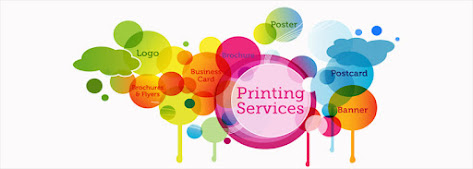Offset Printing Vs Digital Printing
Offset
printing is an established printmaking technique where the inked image is
directly transferred from a solid plate to a specially coated rubber substrate
and then to the desired printing surface. The offset method uses a solid image
carrier, which is the top layer that presses against the substrate and holds
the ink. Solid ink printers are suitable for single colors or low-resolution.
The printing equipment consists of the printer itself, the ink cartridges, and the
transfer paper. It is possible to create high-quality offset printouts even on
small documents and images. Offset printing has many advantages over other
printing technologies but also has some disadvantages.
Most
businesses have little need for full-color digital printing because they
already own a printing press, in either the form of a desktop printer or a
copier, and most businesses operate digitally anyway. For these businesses
offset printing might be a suitable option, especially for short runs of print
materials. However, for long-run or large-scale printing, especially when
considering projects where there will be many prints, it is more cost-effective
to use traditional digital printing techniques.
There are
several methods of Offset Printing, depending on the number of plates and the
type of materials to be printed. The most basic method is called single-sided,
or single-sided offset printing. With this process, the image is printed on one
side of the plate, while the location where the image will be placed is chosen
beforehand. For instance, if the image will be printed on a metal plate and
then inserted into a rubber sheet print mold, the metal plate can be positioned
to keep the image exactly where it needs to go.
Double-sided
offset printing is very similar to single-sided, but the second sheet of
material is placed over the first, thus creating a second layer. This layer is
also called offset ink since it is applied to the second layer of rubber or
other material rather than being spread on top of the original area of the material. Because the second layer uses a different color than the top layer,
it produces much clearer images than the first layer.
After the desired location has been selected and the ink is loaded, the next step is to
place the image onto the drum or plate in the offset machine. For this process
to be successful, there must be at least two complete cycles of spinning time
before the image begins to dry. If only one complete cycle occurs, some of the
ink used during the original warmup run may run out before the image is
properly dry. In addition, the ink used in the subsequent warmup runs may wash
away before the image is completely finished drying.
The final step is the actual printing itself. For standard paper sizes, a variable-illustration
setup will usually be utilized. This setup consists of a copying machine that
digitally prints the image onto either an Offset Printing Press or, for high-quality prints, onto a dye-sublimation printer. Once this is completed, it will
then be rushed to the fulfillment store where it will be packaged for delivery
to customers. Depending on the particular manufacturer, this delivery maybe
overnight, however, most companies are able to provide a very reasonable
overnight shipping and delivery estimate.
There are
several advantages and disadvantages to using offset printing for your next
digital printing project. The advantage is that you do not have to rely on a
third-party manufacturer to complete the job for you, therefore avoiding any
additional costs for tools or supplies. Additionally, you can save a tremendous
amount of time by doing the design and crafting of your own artwork. Many
businesses find the digital printing project to be less expensive, especially
when compared to the cost of traditional print media.
In
closing, it is important to consider whether or not offset printing may be the
best option for your next printing needs. Depending upon your own business
structure, there are a number of different ways that you may be able to utilize
the service. If you are simply looking to provide packaging and lab production
for your next order, there are plenty of options that are readily available for
your use. Alternatively, if you require high-quality color separation and spot
color separation, as well as the expertise to ensure that every image is
properly labeled and attributed correctly, then you may want to turn your
attention towards digital printing equipment. Whatever your specific printing
needs may be, you are sure to find something that is readily available.




Comments
Post a Comment